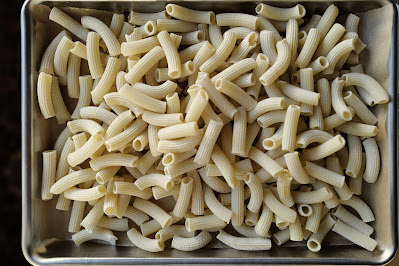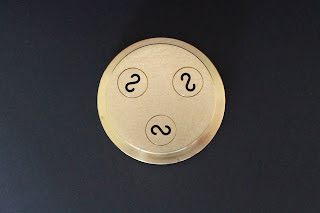Boxing, moving, unpacking and shelving my library only slightly tempered my cookbook purchases this year. Looking back over 2022, publishers released several outstanding titles. I share, in alphabetical order, my picks for the five best cookbooks of this year.
Arabiyya-Recipes from the Life of an Arab in Diaspora by Reem Assil, Ten Speed Press
Gâteau-The Surprising Simplicity of French Cakes by Aleksandra Crapanzano, Scribner
I Am From Here-Stories and Recipes from a Southern Chef by Vishwesh Bhatt, Norton
Mission Vegan-Wildly Delicious Food for Everyone by Danny Bowien with JJ Goode, Ecco
Pasta Grannies – Comfort Food by Vicky Bennison, Hardie Grant
A little about each of these books.
I find the food presented in Reem Assil’s Arabiyya both tempting and familiar to many of the Armenian dishes I grew up eating. Ruz Arabi (Spiced Rice with Fried Vermicelli) reminds me of Armenian Pilaf (here), save Assil’s recipe incorporates a Seven-Spice mix instead of a mere pinch of cayenne, and calls for oil, not butter, to brown the vermicelli. Her Lahm Bi Ajeen (Crispy, Spiced-Meat Flatbread) closely resembles Armenian Lahmajoon. Assil jokes that “..if the Arabs and Turks are fighting over their claim to [a certain food], chances are, it’s Armenian.” But what I really love about Arabiyya is Assil’s consciousness of identity and place, before and after her diaspora. Hospitality and remembrance brightly glow in each of the book’s five parts: How to Host Like an Arab; The Arab Street Corner Bakery; The Arab Table; An Arab Finds her Vegetable Roots; and An Arab Finds her (Food) Way. I hope Assil follows up this excellent cookbook with a deep dive into baking.
And speaking of deep dives into baking, Aleksandra Crapanzano’s Gâteau opens with nine takes on yogurt cake and 50+ variations on pound cake. In Gâteau’s Introduction, Crapanzano writes “[t]he French bake at home far more than we imagine. But, maybe more important, they bake far more simply than we imagine, and mostly from a range of classics that lend themselves to seasonal riffing and improvisation.” This truth plays out in the 150 or so recipes that Crapanzano shares in this tight, well-written cookbook. Chapters include: The Simplest of the Classics; Regional Classics; Chocolate Cakes; Cakes to Layer; Madeleines, Financiers, Visitandines; Holiday Cakes; and Savory Cakes. I’ve earmarked Crapanzano’s recipe for Rouleau Fraise-Rhubarbe, Glaçage au Citron (Strawberry-Rhubarb Rouleau, Lemon Buttercream) to bake when spring arrives.
Like Reem Assil’s Arabiyya, Vishwesh Bhatt’s I Am From Here shares how an immigrant transforms heritage recipes with newly found ingredients. Bhatt further adapts the classics recipes of his chosen home (i.e., America’s Deep South) with the flavors of his birthplace. Born in the Indian State of Gujarat, Bhatt settled in Oxford, Mississippi, and identifies as a Southern chef. His cooking earned him the James Beard Award for Best Chef: South (2019) and induction into the Fellowship of Southern Farmers, Artisans, and Chefs (2022). Bhatt divides his fabulous cookbook into thirteen chapters: Rice; Peas and Beans; Okra; Tomatoes; Eggplant; Corn; Potatoes and Sweet Potatoes; Peanuts; Greens; Shrimp; Catfish; Chicken; and Pork and Lamb. Sounds pretty Southern, right? In part! Flip through the Rice chapter and find his grandmother’s Khichadi recipe along with recipes for Dirty Rice Grits and for Jambalaya. The Okra chapter has Bhatt’s take on Okra Chaat and, recognizing the diversity of his American South, a Lebanese Lamb, Okra, and Tomato Stew dish called Bamia (which, if you take out the cinnamon, allspice and cloves, closely resembles my favorite Armenian lamb, okra and tomato stew also called Bamia, which means okra in Armenian). I really love I Am From Here and predict it will win critical acclaim.
A new cookbook by Danny Bowien is exciting news! I find his The Mission Chinese Food Cookbook (2015) massively interesting. Mission Vegan-Wildly Delicious Food for Everyone continues Bowien’s creative evolution. The book shares recipes from his Mission Chinese Food restaurants that just happen to be vegan. Of the Asian offerings the book skews toward Korean. Bowien writes “[e]ating and cooking has long been my way of exploring who I am. My identity, like the food I make, is constantly evolving. Which is why in this book, you’ll find pasta pomodoro in the same chapter as chewy Korean buckwheat noodles topped with dragon fruit ice, tofu skin in the style of cumin lamb, and green tea noodles that taste like Vietnamese pho.” I particularly like Mission Vegan’s chapter on Sauces and Seasonings. I made Mushroom Seasoning Powder and use it whenever I want to add deep richness to a dish. Mission Vegan’s photographs pop off the page and are as intense and bold as Bowien’s food.
Vicky Bennison’s Pasta Grannies – Comfort Cooking makes my list of 2022’s best cookbooks because nearly every single recipe tempts me to cook it. I especially love the book’s numerous baked pasta recipes, like Adi’s Anelletti al Forno alla Palermitana (Baked Pasta from Palermo) and Iginia’s Princisgras (Porcini and Prosciutto Lasagna from Macerata), that, for me, epitomize comfort food. Another baked pasta I want to try: Enrica’s Torta Verde Con Prescinsêua (Cheese and Chard Pie from Genova). Each well-written recipe in the book includes a QR code that, when scanned, takes the reader to a video showing the nonna making her dish. If you love Italian cooking, you will want to check out this excellent cookbook.
I conclude my list with a few of the 2023 cookbooks on my radar. In March, Phaidon offers BAO by Erchen Chang, Shing Tat Chung and Wai Ting Chung, and in May publishes Japan: The Vegetarian Cookbook by Nancy Singleton Hachisu. Katie Parla has a new cookbook due out in March titled Food of the Italian Islands that I plan on checking out. I’ll report on any other interesting offers as they arise.
Now that my move is over and I feel more settled, I hope to post more often in 2023. I look forward to exploring my old stomping grounds and making a lot of pasta. I recently took the plunge—finally—and purchased an electric pasta extruder from Emiliomiti (here) in San Francisco. We’ll say hello to Dolly in 2023.














